Learn how to handle snow, ice and other cold-weather landscape factors to minimize falls and damage
By Jocelyn H Chilvers - Houzz
A wintry wonderland is a beautiful sight to behold, and an
occasional walk along a snowy garden path is a real treat. For main
entryways and often-used walks and patios, however, safety is a real
concern. Here are a few things you can do now — and in the future — to
keep snow and ice from becoming a hazard to you, your guests and your
favorite delivery person.
What to Do Now
Remove snow quickly. Use a shovel or a snow blower and broom to remove snow as quickly as possible. Once snow has been walked on and becomes compacted, it is that much more difficult to remove. Dense, compacted snow converts to ice readily. Sprinkle gravel, straw or wood chips to provide some traction on areas where ice or snow remain.
Remove snow quickly. Use a shovel or a snow blower and broom to remove snow as quickly as possible. Once snow has been walked on and becomes compacted, it is that much more difficult to remove. Dense, compacted snow converts to ice readily. Sprinkle gravel, straw or wood chips to provide some traction on areas where ice or snow remain.
Prevent ice buildup on walkways by monitoring water flow. Check to make sure that your roof and gutters are flowing freely. Add rain chains or downspout extensions to direct water away from paved areas and home foundations.
Minimize the use of snow- and ice-melting products. Most
of these products are composed of salts; they work by attracting
moisture to themselves and forming a liquid brine that generates heat
and melts the snow. However, salt will cause damage to plant roots and,
once absorbed by the plant, will cause brown, desiccated edges on new
leaves and shoots — or even death. Salts are also corrosive and may
damage hardscaping. Last, but not least, these products can be harmful
to pets.
If you do use a deicer, you can reduce its negative impact with these precautions:
If you do use a deicer, you can reduce its negative impact with these precautions:
- Use products that are labeled safe for pets.
- Always follow the manufacturer’s instructions and choose the right product for the conditions. For example, rock salt (sodium chloride) is effective only at temperatures above 20 degrees Fahrenheit, while other products are effective to -25 degrees.
- Cut the product with sand, kitty litter or sawdust — or forgo a salt product altogether — to provide traction and reduce the amount of product needed.
- After the storm, get out the shovel or snow blower and clear pavement areas as soon as possible. This will help prevent overuse of the product.
- Once the pavement has been cleared, sweep up and dispose of excess product. Don’t sweep it onto lawns, onto garden beds or into the street; this will keep it out of the stormwater drainage system and natural waterways.
- Flush landscape and pavement areas with water where you suspect product overuse or damage.
How to Plan Ahead
Choose the right hardscape. Think about winter safety when designing or renovating your home’s hardscape. For active traffic areas, keep paving surfaces even and with a bit of texture. Think brushed concrete, large slabs of natural stone (shown) or landscape pavers (which are not as slick as house brick).
Choose the right hardscape. Think about winter safety when designing or renovating your home’s hardscape. For active traffic areas, keep paving surfaces even and with a bit of texture. Think brushed concrete, large slabs of natural stone (shown) or landscape pavers (which are not as slick as house brick).
Wood decking in particular is
fairly easy to clean off, provides some traction, and allows moisture
runoff because of the spacing between planks.
Caution: Some composite deck surfaces can be very slippery when wet. Expanded metal can be substituted for an industrial look.
Caution: Some composite deck surfaces can be very slippery when wet. Expanded metal can be substituted for an industrial look.
Add railings. Stairways in
snowy climes should always include handrails for support, even for
short flights of stairs. Consider using riser-free (backless) stairs, as
shown here, for easier cleaning.
Consider subsurface heating systems
for areas beneath driveways, patios and pool decks to keep daily
outdoor activities accessible all winter. This is an expensive option,
but one that may have value in locations with very high snowfall or for
especially large areas.
Employ some or all of these ideas for a beautiful and serene winter landscape.
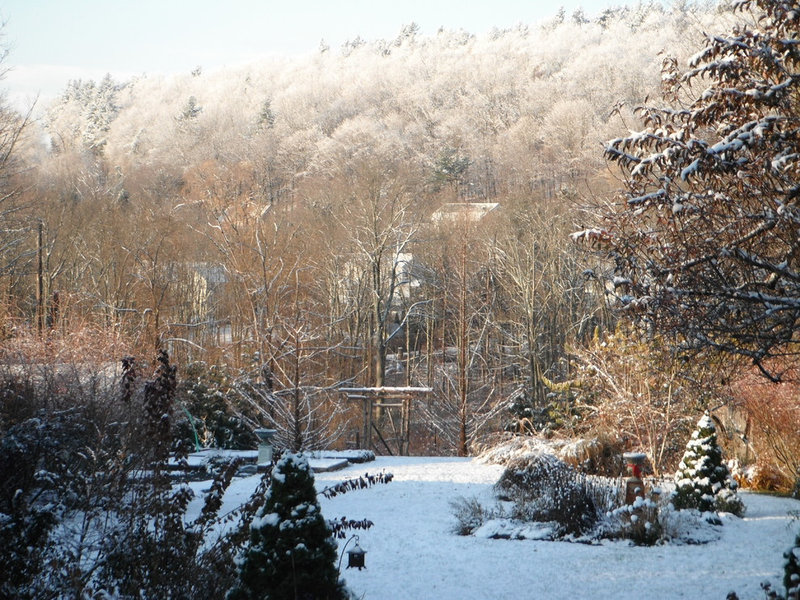
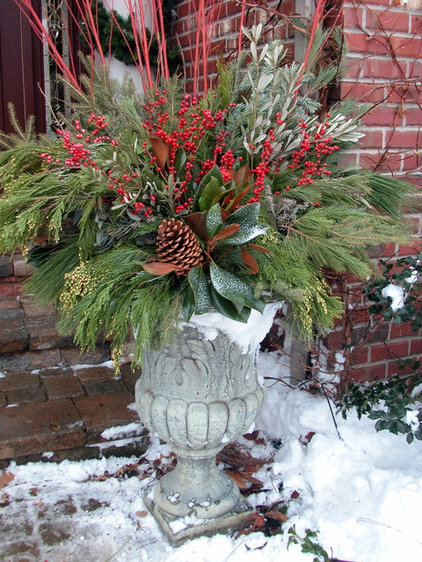
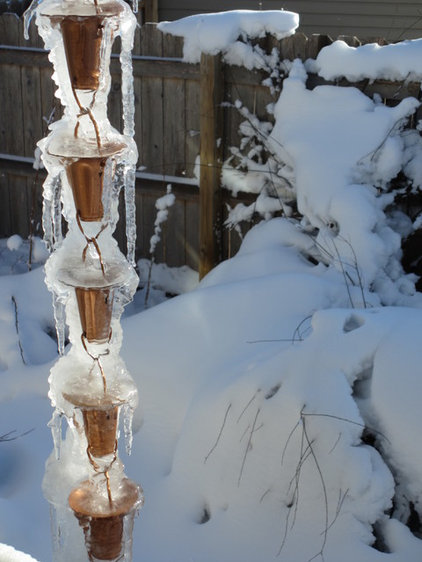
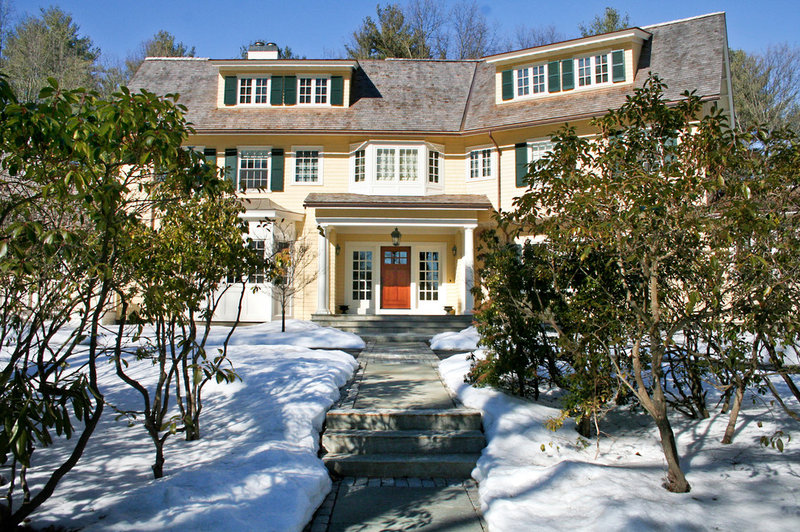
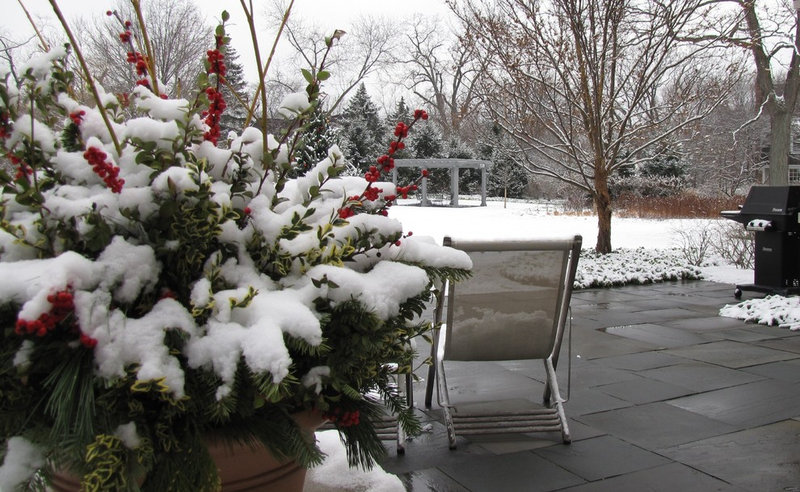
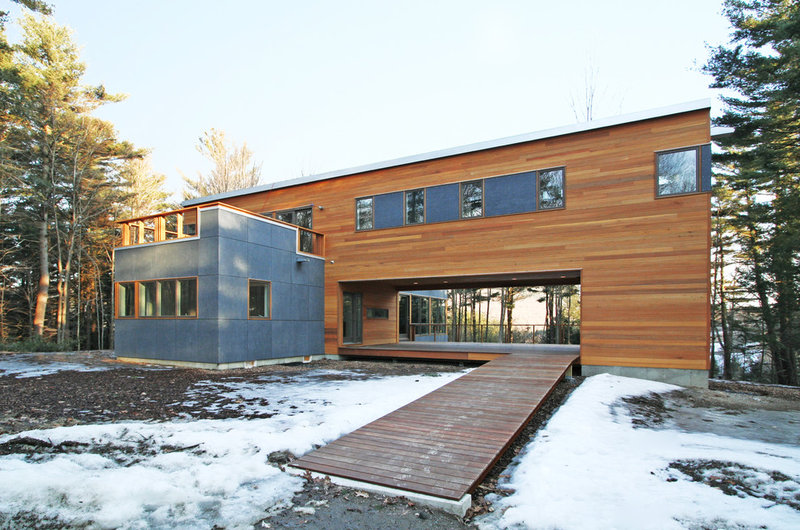
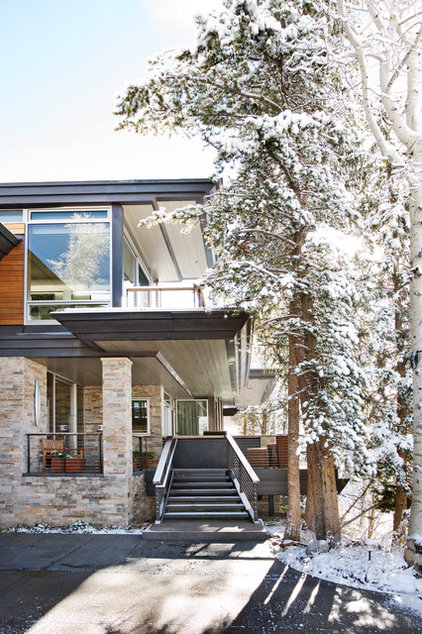
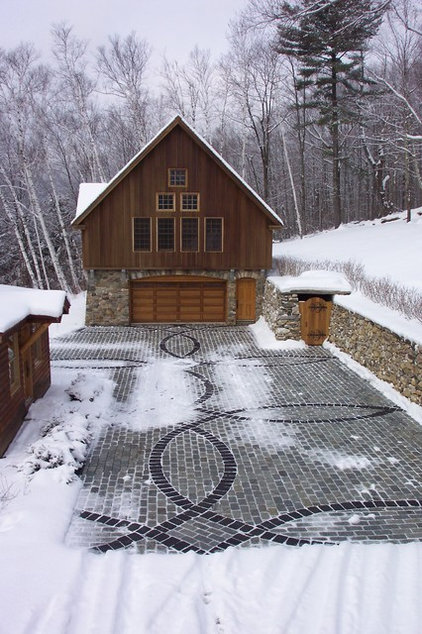
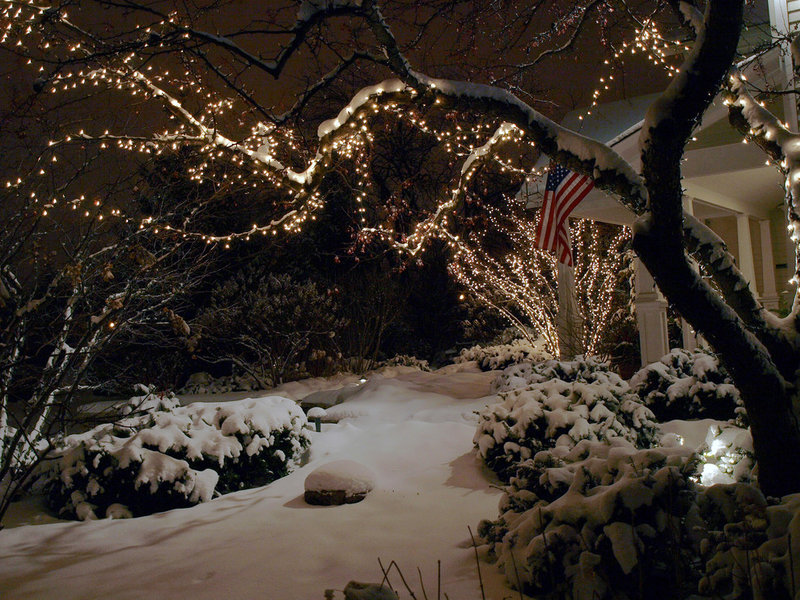
No comments:
Post a Comment